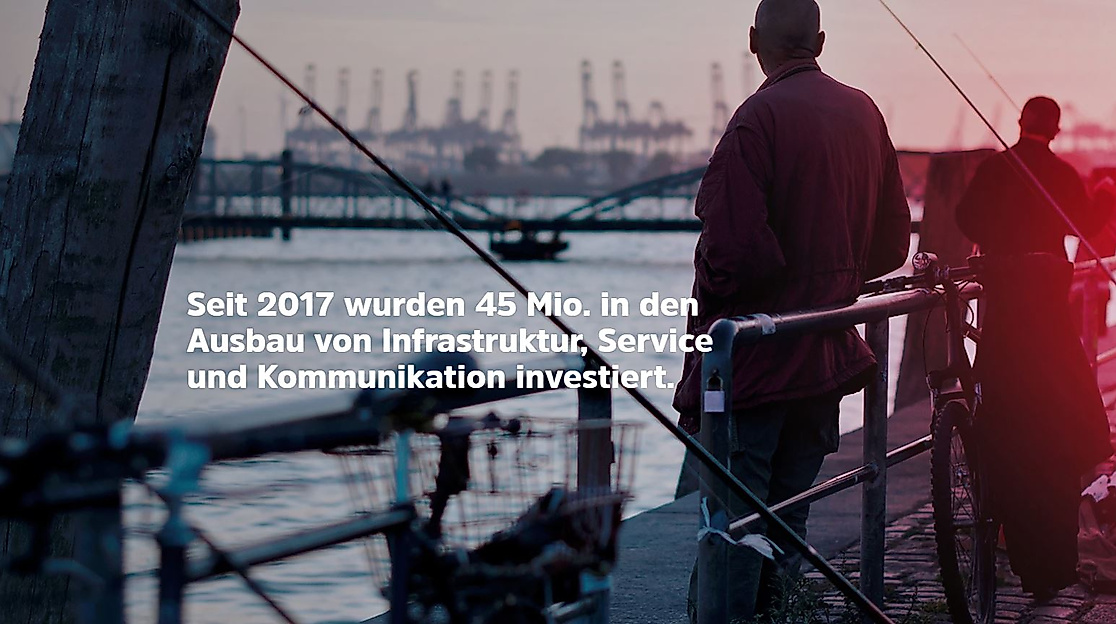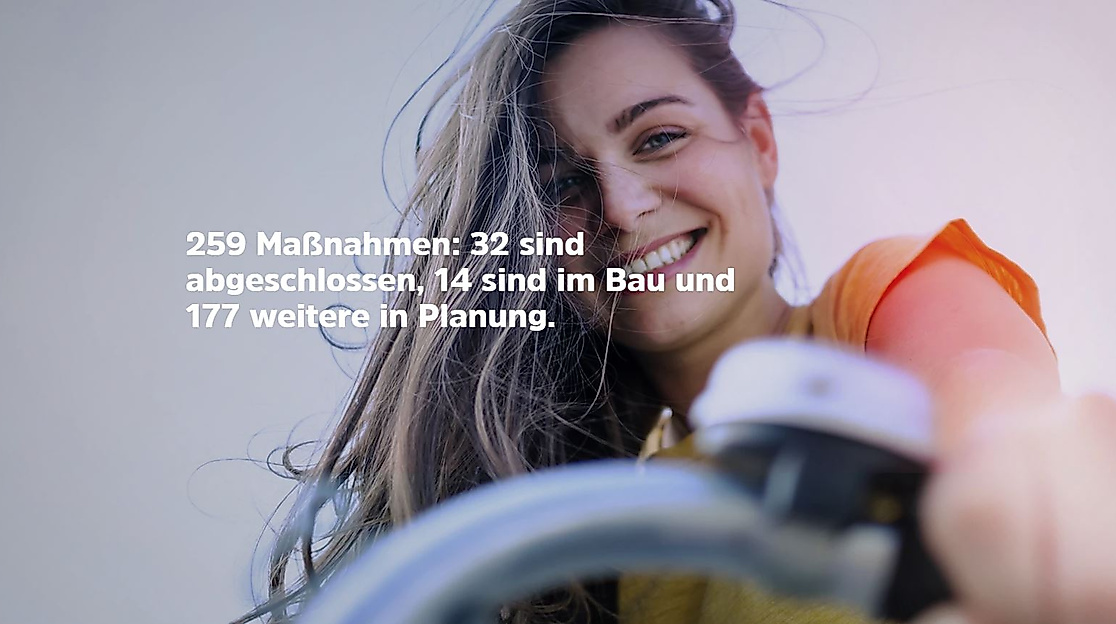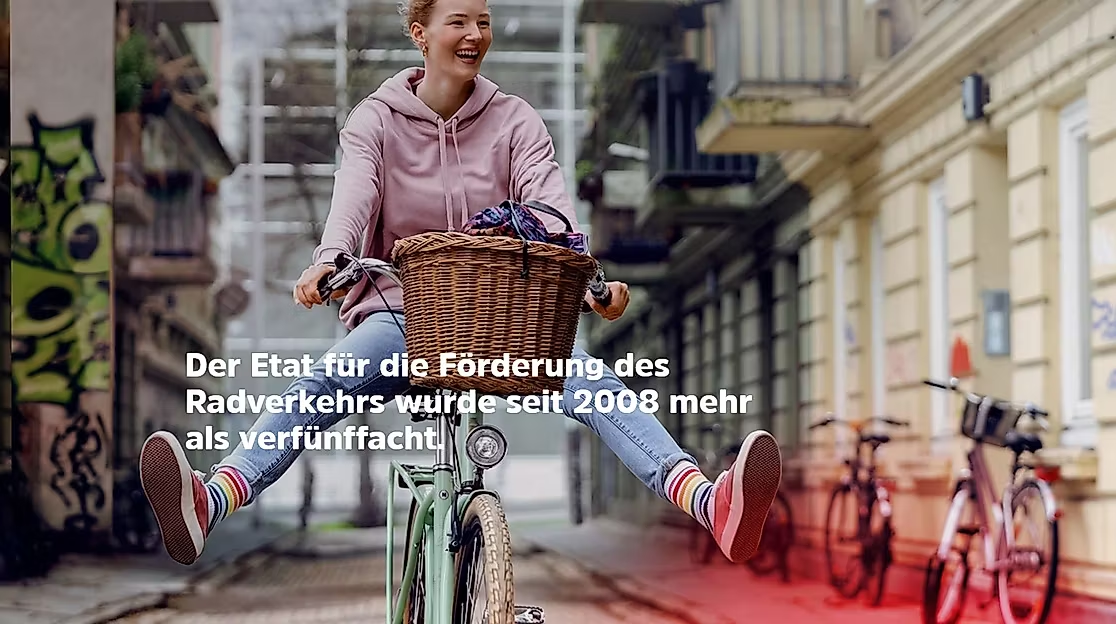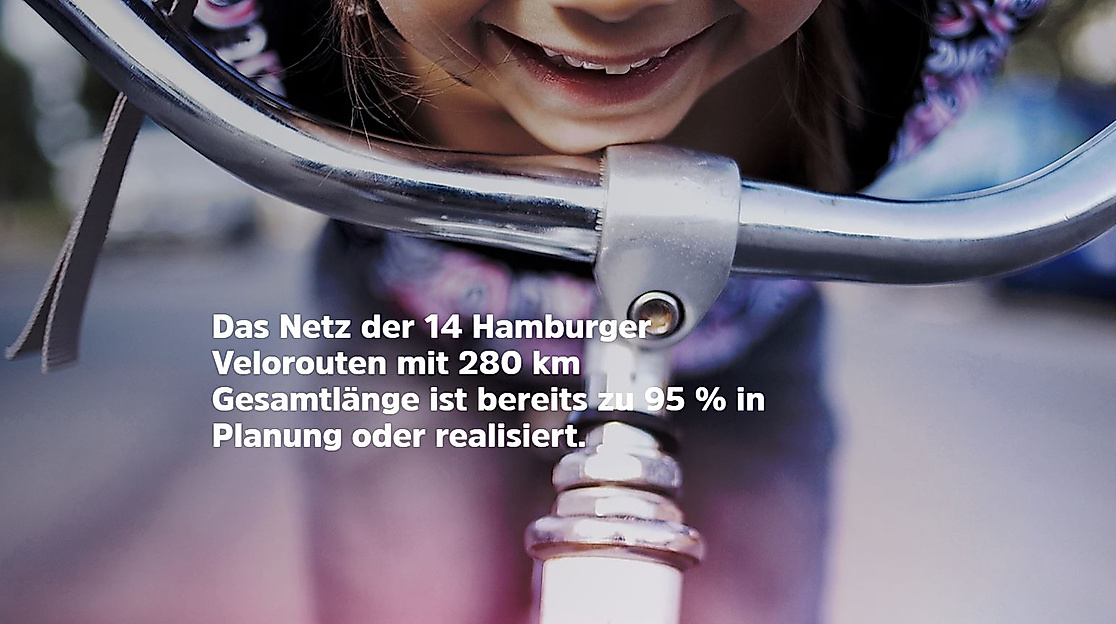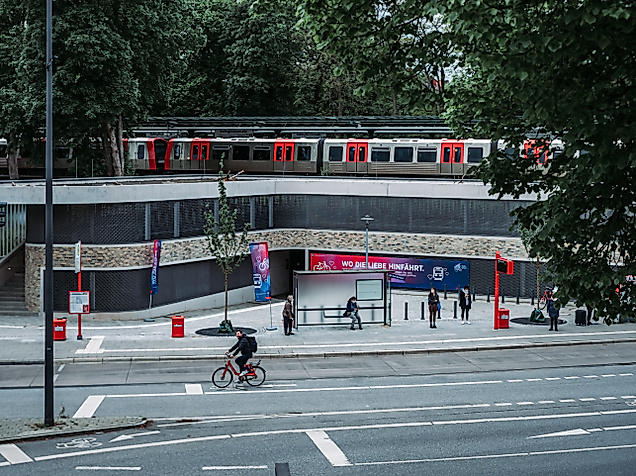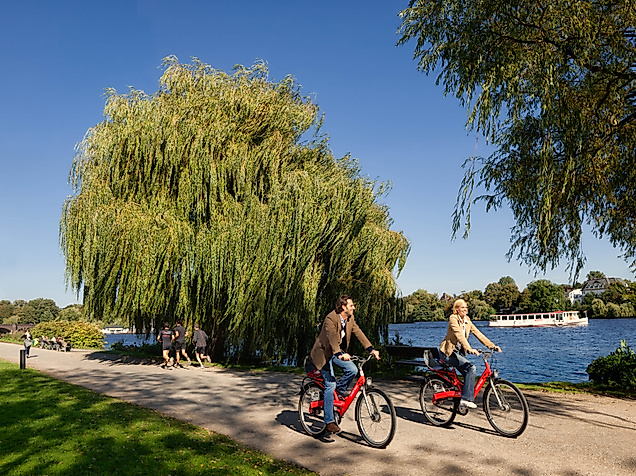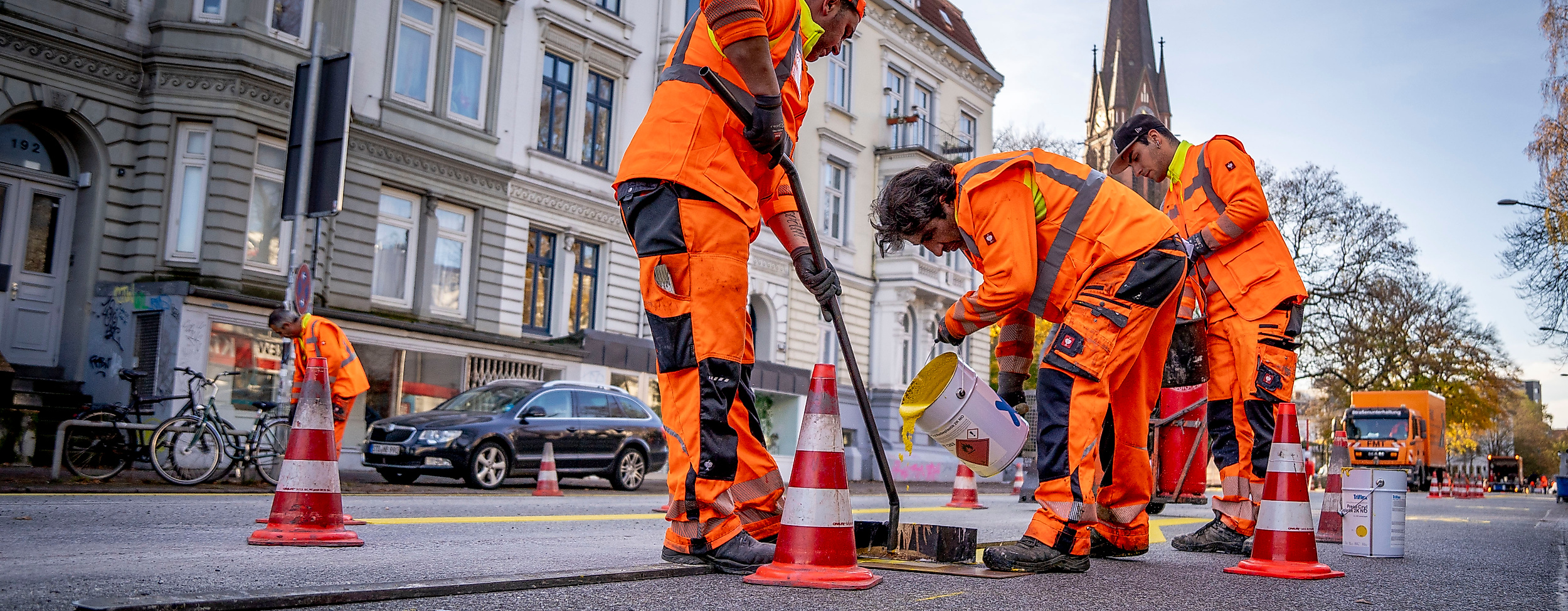
Hamburg becomes Bikeburg Why Hamburg wants to become a bicycle-friendly city
Even in a pulsating metropolis like Hamburg, some days simply ripple along. Others, however, make big waves and lay the foundation for far-reaching changes.
26 June 2016 was such a day. On this day, our current Federal Chancellor and at that time First Mayor of Hamburg, Olaf Scholz, the senators of the relevant authorities, the seven Hamburg district heads and the chairpersons of the district assemblies signed the "Alliance for Cycling". Find out here what this is all about and why Hamburg wants to become a bicycle-friendly city in the first place.
Cities like Copenhagen and Amsterdam show us that the approach "more bikes, less cars" has a positive impact on the quality of life in big cities. Bicycles are cheaper to buy and repair than cars, and because of city congestion, they usually get you to your destination faster and it's easier to find a parking space. If there were fewer cars in Hamburg, we would also have more space for green areas, daycare centres and recreational facilities.
In addition, cyclists live healthier lives and thus reduce the costs for the health system. In addition, we are often nicer to each other when we are not separated by powerful metal boxes and clouds of smoke. Cycling therefore improves social interaction and makes cities more family-friendly. So it's about more quality of life and sustainability, climate protection, our health and fair coexistence on Hamburg's roads. From 2008 to 2017, the share of cycling in Hamburg has already risen from 13 to 15 %.* The "Alliance for Cycling" would like to increase the share to 25 %.
*Source: BMDV - Mobility in Germany
The prospects for this are good, because cycling is becoming more and more popular and is gaining an ever better reputation. From 2000 to 2018, the number of cyclists increased by 80%!** According to a representative survey***, 41% of Germans want to cycle more, 57% want politicians to build more cycle paths and 77% cycle at least occasionally. The feeling of safety when cycling has also increased: from 53% in 2017 to 63% today. Obstacles still exist in the form of bad weather, fear of accidents, poor infrastructure and intolerance between cyclists, pedestrians and car drivers.
**Source: Hamburg Bicycle Level Measurement 2018
***Source: SINUS Institute - Bicycle Monitor 2021
However, a tolerant coexistence of all road users should be in everyone's interest. The expansion of cycling can contribute to the implementation of other important city projects. These include the Hamburg Climate Plan, the Clean Air Plan, the Noise Reduction Action Plan and the Mobility Plan. These are all strong motives for setting positive signs together for an even more liveable Hamburg and for encountering each other on all transport routes with Hanseatic composure. Perhaps the weather will play along more often.
